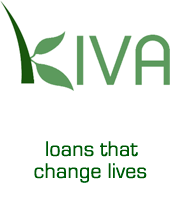Kiva: social network for philanthropists
 The world is not without good people, it is a fact. But finding such people sometimes becomes a daunting task, especially when it comes to material costs on their part. In small home-based businesses whose owners do not seek to turn mountains, giant investments are not required to support the business. But when there is a need to expand the business or, for example, upgrade equipment, there is simply nowhere to find a source of financing.
The world is not without good people, it is a fact. But finding such people sometimes becomes a daunting task, especially when it comes to material costs on their part. In small home-based businesses whose owners do not seek to turn mountains, giant investments are not required to support the business. But when there is a need to expand the business or, for example, upgrade equipment, there is simply nowhere to find a source of financing. This problem occurs in millions of people around the world, mostly in developing countries. The issuance of small loans, or microloans, is supported by large financial and humanitarian international organizations. The UN even declared 2005 the Year of Microcredit, to show the importance of this line of business in the fight against poverty and unemployment throughout the world.
The economic theory of microcredit was first developed and put into practice by Mohammed Yunus, a Bangladeshi who was educated in the United States. In 1976, he organized Grameen Bank, which over 30 years of its history has already managed to issue more than 4 million loans worth about $ 5 billion, mainly in Bangladesh itself. In the course of its work, the bank developed several schemes that ensured guaranteed loan repayments and, in some cases, control over its spending: from simple mutual responsibility to mechanisms based on various trust ratings.
Today in the world there are already more than 16 thousand financial organizations working with microloans. Kiva, one of them, would be unremarkable (she plans to cover only 25 countries so far), if not for her working methods. Most of the communication between lenders, borrowers, and guarantor intermediaries takes place via the Internet, on the beautifully designed Kiva.org website .
The scheme of Kiva, which can be called a social network, is shown in the figure below. On the organization’s website, everyone can see a constantly updated list of loan applications. If a potential lender likes some kind of project (well, or the person who runs this project - at first glance it is clear that the girls are more willing to help), he can make a contribution to his fund in the amount of $ 25 using his credit card. At the moment, all loans are given on an interest-free basis, however, by 2008, when the organization should become self-supporting, the situation may change. But then the interest will be small.

The Silicon Valley company’s main office administers the site and contacts local partners who communicate directly with borrowers in need of money. When the loan expires (or earlier), partners collect money from borrowers and send them to the main office, where they are distributed to all lenders.
Most lenders lend a little, but a decent amount provides a very quick accumulation of the required amount (usually not more than $ 2000). For each loan application, detailed information is available about the borrower (required with a photograph, a brief biography and a description of his intentions) and the local partner, as well as a list of people who have already invested. An automatically generated RSS feed allows you to monitor progress in real time. In addition, the system creates a banner code leading to the application page, which can be placed on third-party sites.
In general, Kiva welcomes the help of volunteers in their work, who often act as translators and do other necessary work.
One recent applicationcame from Kokou Johnson from African Togo. He owns a small grocery store and needs $ 1,200 to buy goods and open another outlet. He plans to give money in 12-15 months. At the time of this writing, he had already received $ 850 from 23 people, mainly from the United States and France (Togo is a former French colony).
Those who doubt the honesty of borrowers should get acquainted with the statistics of the International Bank for Reconstruction and Development, which says that over 30 years of active work on microcrediting, the repayment rate of loans around the world was 96%. The Kiva experience speaks of the same figure ...
However, ordinary banks, as a rule, are still very distrustful of microcrediting. Especially in developing countries where financial risks are especially high. Therefore, on the Kiva website you can see many applications from countries such as Bulgaria, Romania and Azerbaijan, countries of equatorial Africa and Southeast Asia.
